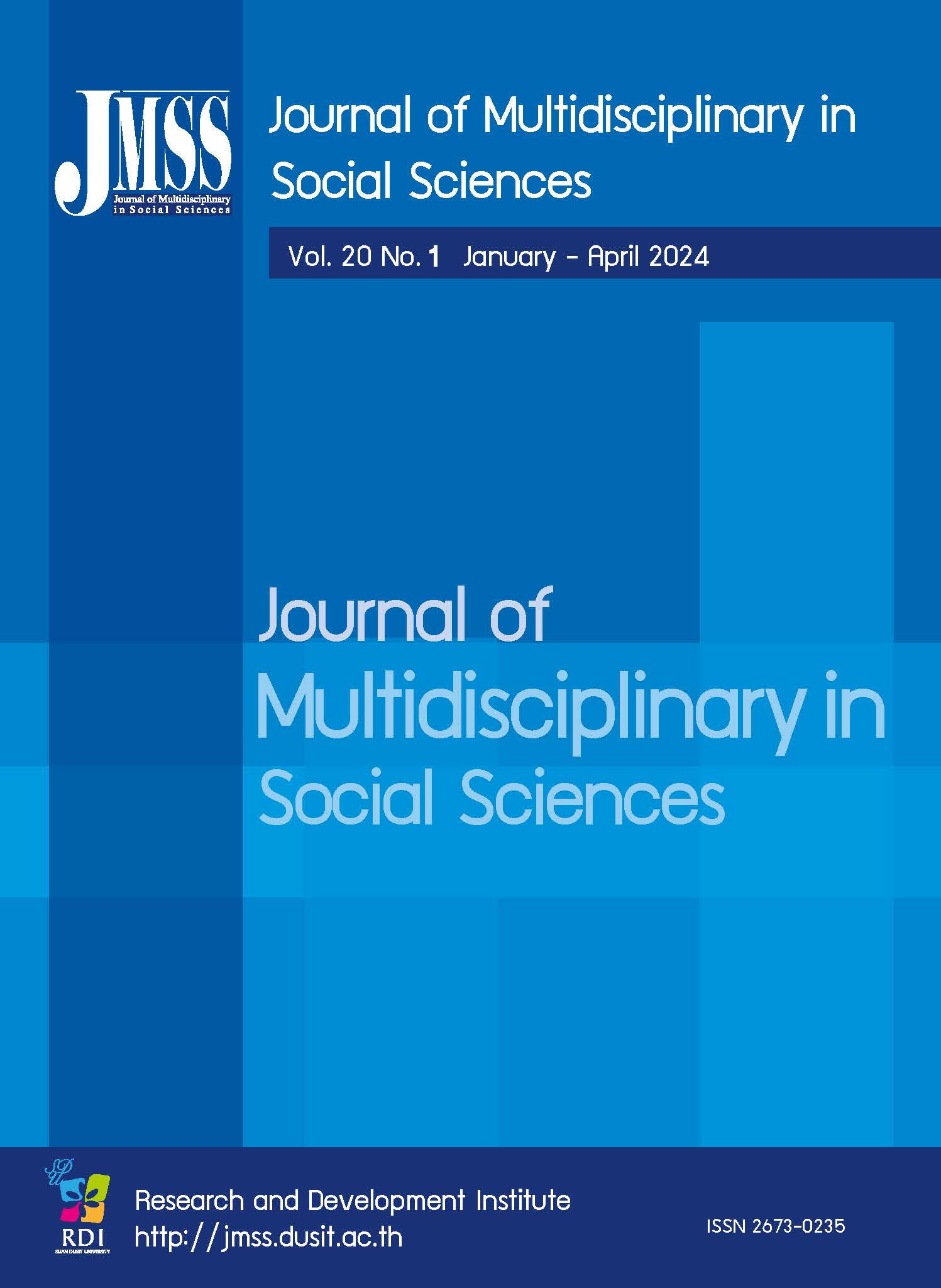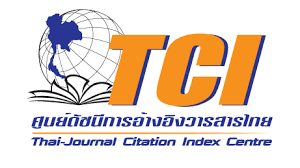Spiritual Tourism
Keywords:
Tourism, Spiritual tourism, Religious tourismAbstract
In this article, the concept and meaning of tourists are explained, including the component of spiritual tourism and the differences between spiritual tourism and religious tourism. Spiritual tourism is usually linked to words such as faith-based tourism, religious tourism and sacred tourism. Spiritual tourism has two meanings: (1) Tourism for spiritual purpose, pilgrimage, joining religious ceremony or fulfilling belief and faith of each person. (2) Tourism for self-improvement or self-exploring. Traveling to fulfill one’s identity looking pass race, religion, color and cult. Spiritual tourism can be divided into 5 types: (1) Refuge Seekers (2) Learners (3) Exploratory Dabblers (4) Reinforcers (5) Spiritualists. The components that influence tourists to travel to spiritual tourist attraction are: (1) Natural Resources (2) General Infrastructure (3) Tourist Infrastructure (4) Tourist Leisure and Recreation (5) Arts, Culture and History (6) Political and Economic Factors (7) Natural Environment (8) Social Environment (9) Atmosphere of the Place. This article presents the body of knowledge about data management for spiritual tourism to be used as history, storytelling to enhance diversity and value for tourism.
References
Albayrak, T., Herstein, R., Caber, M., Drori, N., Bideci, M., & Berger, R. (2018). Exploring religious tourist experiences in Jerusalem: The intersection of Abrahamic religions. Tourism Management. 69, 285-296.
Bangkokbiznews. (2024). Mahidol University initiated the development of spiritual tourism for sustainable tourism. Retrived from https://www.bangkokbiznews.com/pr-news/biz2u/273044
Bone, K. D. (2011). Spiritual retreat tourism in aotearoa/New Zealand. (Doctoral dissertation). Retrieved from ResearchSpace@ Auckland.
Bui, N. A., & Kiatkawsin, K. (2020). Examining Vietnamese hard-adventure tourists’ visit intention using an extended model of goal-directed behavior. Sustainability 2020, 12(5), 1747.
Chinthaka, H., & Senarathna, S. (2012). The Opportunities for Development of Spiritual Tourism in Sri Lanka. Paper presented at The Annual Research Symposium 2012, Faculty of Graduate Studies, University of Kelaniya.
Chi, X., Lee, S.K., Ahn, Y., & Kiatkawsin, K. (2020). Tourist-perceived quality and loyalty intentions towards rural tourism in China. Sustainability 2020, 12(9), 3614.
Crouch, G. I., & Ritchie, J. B. (1999). Tourism, competitiveness, and societal prosperity. Journal of business research, 44(3), 137-152.
Dann, G. M. (1981). Tourist Motivation: An Appraisal. Annals of Tourism Research. 8(2), 187-219.
Duangkaew, N. (2020) Insight into the power of 'Mutelu' Soft Power of Thailand that generates enormous income. Retrieved from https://thestandard.co/key-messagesmutelu-
amulet-and-commercial-buddha/
Dwyer, L., & Kim, C. (2003). Destination competitiveness: determinants and indicators. Current issues in tourism, 6(5), 369-414.
Economics Tourism and Sports Division, Ministry of Tourism & Sports. (2021). Economic Tourism Economy Report. Bangkok: Excellent Business Management Company Limited.
Fedorova, A. (2016). New Product Development in Spiritual Tourism Case Study: Omalaya Travel Ltd.. (Bachelor dissertation). Retrieved from https://www.theseus.fi/bitstream/handle/10024/120326/Fedorova_Alina.pdf?sequence=1
Fernandea, C., Pimenta, E., Goncelves, F., & Rachao, S. (2012). A new research approach for religious tourism: the case study of the Portuguese route to Santiago. Tourism Policy, 4(2), 83-94.
Frey, N. L. (1998). Pilgrim Stories: On and Off the Road to Santiago, Journeys Along an Ancient Way in Modern Spain. California: Univ of California Press.
Fluker, M. R., & Turner, L. W. (2000) Needs, Motivations, and Expectations of a Commercial Whitewater Rafting Experience. Journal of Travel Research, 38(4), 380-389.
Giddens, A. (1991) Modernity and Self-identity: Self and Society in the Late Modern Age. California: Stanford university press.
Gnoth, J., & Zins, A. H. (2013). Developing a tourism cultural contact scale. Journal of Business Research, 66(6), 738-744.
Heelas, P., Woodhead, L., Seel, B., Tusting, K., & Szerszynski, B. (2005) The spiritual revolution: Why religion is giving way to spirituality. New Jersey: Wiley-Blackwell.
Hill, B., Gibbons, D., illum, S., & Var, T. (1995). International institute for peace through tourism. Annals of Tourism Research, 3(22), 709. Hooper, J. (2015). Destination too far? Modelling destination accessibility and distance decay in tourism. Geo Journal, 80, 33–46.
Jesurajan, S. V. A., & Prabhu, S. V. (2012) Dimensions of spiritual tourism in Tuticorin district of Tamil Nadu in India-A critical analysis. Business Intelligence Journal, 5(2), 245-251.
Kelly, C. (2012). Wellness Tourism: Retreat Visitor Motivations and Experiences. Tourism Recreation Research, 37(3), 205-213.
Kiatkawsin, K.; Han, H.(2017). An alternative interpretation of attitude and extension of the value-attitude-behavior hierarchy: The destination attributes of Chiang Mai, Thailand. Asia Pacific Journal of Tourism Research, 22(5), 481-500.
Kim, J. H. (2014). The antecedents of memorable tourism experiences: The development of a scale to measure the destination attributes associated with memorable experiences. Tourism management, 44, 34-45.
Klenosky, D. B. (2002). The “pull” of tourism destinations: A means-end investigation. Journal of travel research, 40(4), 396-403.
Kujawa, J. (2017). Spiritual tourism as a quest. Tourism Management Perspectives, 24, 193-200.
Lehto, X. Y., Brown, S., Chen, Y., & Morrion, A. M. (2006). Yoga tourism as a niche within the wellness tourism market. Tourism Recreation Research, 31(1) 25-35.
Li, X. (2012). Examining the ‘relative image’ of tourism destinations: A case study. Current Issues in Tourism, 15(8), 741-757.
McKercher, B., & Du Cros, H. (2002). Cultural Tourism: The Partnership between Tourism and Cultural Heritage Management. London: Routledge.
Mckercher, B., & Lew, A. A. (2003). Distance decay and the impact of effective tourism exclusion zones on international travel flows. Journal of Travel Research, 42(2), 159-165.
Narayanan, Y. & Macbeth, J. (2009). Deep in the desert: Merging the desert and the spiritual through 4WD tourism. Tourism Geographies, 11(3), 369-389.
Norman, A. (2012). The varieties of the spiritual tourist experience. Literature & Aesthetics, 22(1), 20-37. Nunkoo, R., & Ramkissoon, H. (2011). Developing a community support model for tourism. Annals of tourism research, 38(3), 964-988.
Reisinger. Y., Mavondo. F. T., & Crotts. J. C. (2009). The Importance of Destination Attributes: Western & Asian Visitors, Anatolia. An International Journal of Tourism & Hospitality Research, 20(1), 236-253.
Rao, S. S. (2019). Engineering optimization: theory and practice. New Jersey: John Wiley & Sons.
Rot, E., Mikinac, K., & Bogdan, S. (2014). General characteristics of religious tourism in Croatia. Journal of Economics, 5(1), 79-89. Satpathy, B., & Mahalik, D. (2010). A study on spiritual tourist site selection under multicriteria. South Asian Journal of Tourism and Heritage, 3(1). 107-117.
Simone-Charteris, M. T., & Boyd, S. W. (2011). The potential for Northern lreland to promote politico-religious tourism: An industry perspective. Journal of Hospitality Marketing & Management, 20(3-4), 457-483.
Singh, S., & Singh. T. V. (2009). Aesthetic pleasures: Contemplating spiritual tourism. Philosophical issues in tourism, 37, 135.
Smith, M., & Kelly, C. (2006). Holistic Tourism: Journeys of the Self? Tourism Recreation Research, 31(1), 15-24. Smith, M., Macleod, N., & Robertson, M. H. (2010). Key concepts in tourist studies, London: SAGE.
Snyder, S. (2007). New streams of religion: fly fishing as a lived, religion of nature. Journal of the American Academy of Religion, 75(4), 896-922.
Syamala, G. & Kakati, S. (2016). A study on religious tourism-potential and possibilities with reference to Shirdi a place of religious tourism. Online International Interdisciplinary Research Journal, 6(3), 115-124.
Turner, L. & Reisinger, Y. (1999).Importance & expectations of destination attributes for Japanese tourists to Hawaii & the gold coast compared. Asia Pacific Journal of Tourism Research, 4(2), 1-18.
Voigt, C., Brown, G., & Howat, G. (2011). Wellness tourists: in search of transformation. Tourism review, 66(1/2), 16-30.

Downloads
Published
How to Cite
Issue
Section
License

This work is licensed under a Creative Commons Attribution-NonCommercial-NoDerivatives 4.0 International License.







